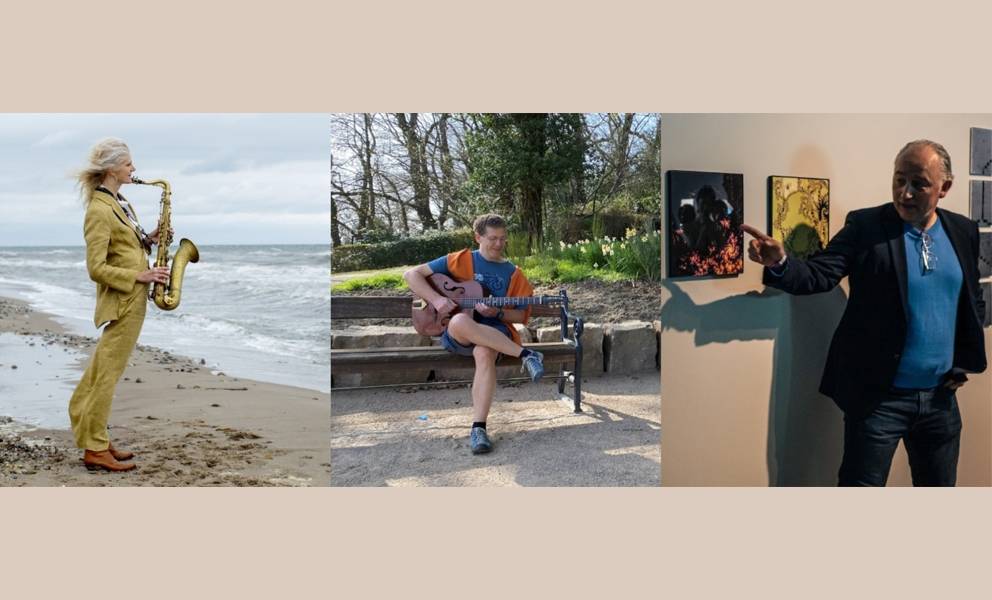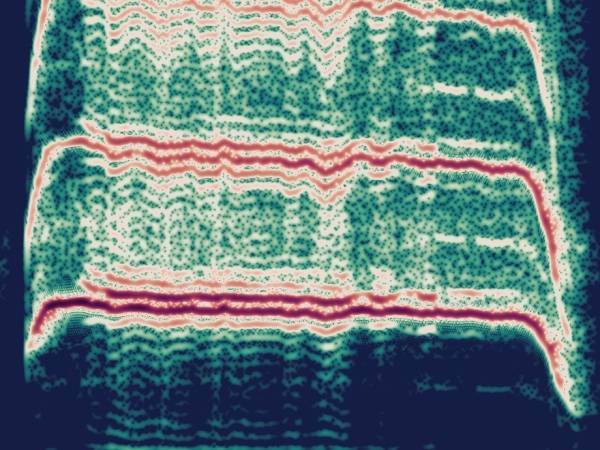6 Minuten
Nature has always been a source of inspiration for humankind. Swimming trunks of wood made us create the first boats, and watching birds made us think about creating machines to help us fly. Beautiful nature made us paint as can be seen in prehistoric Stone Age cave art. Listening to the sounds of nature, like birds singing, waterfalls, the sound of waves, and maybe even our heartbeat has made us create music.
At present, we see a new computing technology – called quantum computing – fully inspired by the nature of atoms and molecules. These machines are built out of “magical” quantum bits called qubits. This qubit world is not deterministic but - as nature - fully probabilistic.
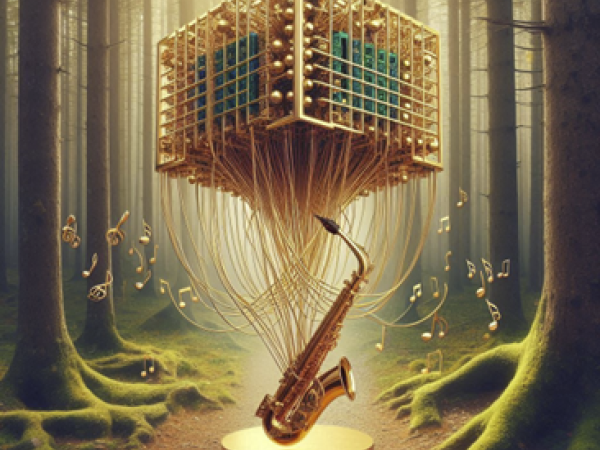
Saxophone image, generated by AI.
Here you see the imagination of Generative Artificial Intelligence (GenAI) combining a Quantum Computer and a saxophone within nature. Here the musical instrument and the machine are building a symbiotic relationship.
A short introduction to quantum computing and fractals
Quantum computers work completely differently compared to classical computers that we use in our daily lives like smartphones, laptops, or PCs. They are analog computing machines following the law of quantum mechanics like nature (e.g. electrons, photons, protons). Because Quantum Computers are working like nature they offer the potential to e.g. simulate nature a lot better than classical supercomputers. This was already postulated in the early 1980s by Richard Feynman, one of the founders of Quantum Mechanics1.
How to create beautiful fractals with such a machine? For this you need mathematics! The philosopher Hegel stated in the early 19th century (towards Newton’s Principia) that within his view nature loses its beauty when Physics describes it mathematically. The creation of fractals out of music with the help of a Quantum Computer might show that this is not quite correct.
Quantum Computing leverages the properties of quantum superposition, interference, and entanglement to perform calculations. The mathematics of vectors, matrices, and complex numbers are used to write down what qubit states look like, where complex numbers are those of the form a + bi, i being equal to the square root of negative 1. Complex numbers find use across physics and are a necessity for quantum theory to accurately describe nature.
At the same time, fractals are geometric shapes that exhibit similar patterns at all scales, so they can represent systems that display self-similarity across both space and time. Fractals comprise amazing shapes seen in nature, from snowflakes, tree branches, succulents, and pinecones to Romanesco broccoli, and more.
There are different iterative techniques for generating fractals, one of them being escape-time fractals like the Julia set. This type of fractals can be generated by assigning a complex number to every point on the complex plane. Then, a recursive function is iteratively applied to each point. If the function converges for the point, it’s part of the fractal and a color is chosen for it. If it diverges, it is not and it remains uncolored.
Julia set fractals are a simple kind of escape-time fractal where the value of z is iteratively updated using the formula z = z² + c, with c being a complex constant. If the absolute value of z stays below 2 after a finite number of iterations, that point is said to be in the Julia set and is colored accordingly. Since the power of quantum states comes from their complex amplitudes (coefficients), these coefficients are used as the c of the Julia set, see 2.
Julia set mating is an approach to leverage all the quantum information available from the state complex amplitudes by leveraging polynomial rational functions, see 3 and 4.
Analyzing music on a quantum computer and connecting to the creation of fractals
Classical Fourier transformation is a widely used and well-established mathematical technique that turns a time-dependent function into its frequencies. The Quantum Fourier Transformation (QFT) is an analog to the classical Discrete Fourier Transformation.
It can be shown that the QFT transformation is unitary and hence can be implemented on a quantum computer, see 5 for further details.
So how can QFT be linked to music? Using Qiskit, which is an open-source software development kit for working with quantum computers, a concrete approach is:
- A 3-qubit QFT quantum circuit is created. The eight complex amplitudes of the 3-qubit state vector are captured with the state vector simulator.
- Measurement gates are added and the circuit can be executed on either a noisy quantum simulator or real quantum hardware. This results in counts and probabilities of each of the eight basis states.
- Python and matplotlib are leveraged to create different types of 3-qubit fractals based on Julia set mating utilizing the eight complex amplitudes, both without and with noise (adjusting for the counts).
Jazz music and quantum fractals
Christina Dahl is a jazz musician always looking for new inspirations in her music. With this, we started an experiment by taking a beautiful piece of her music ‘Souls of the Wind’. We decomposed this music by a quantum computer using QFT and let the machine translate it into beautiful organic fractals. The fractal shapes created on a quantum computer and the music were joined together to create an Aesthetic Seduction 6.
For Christina, fractals created by music are incredibly exciting because they can give inspiration to create new music and go in new directions by virtue of the symbols and associations that lie in the shape and movement of the fractals. For her, the fractal film reflects the organic and man and provides almost endless possibilities for composing music also based on new methods, forms, images, concepts, systems, and more.
The interaction between computer and sound is fascinating, as it can take us to new and exciting places. Quantum computer-generated fractals created by music and music created by quantum computer fractals create new opportunities to go on adventures in an unknown and infinite land.
The interaction between sound and quantum fractals reflects for her the organic, not only from the fractals of nature and nature as a whole but also from the human organic. The movements in the film's fractals are like a beautiful symbolic colorful image of nature and people's unique ability to sense and thus be influenced by energies and moods from everything around us.
The interaction between even the newest technology and music can hopefully help to shed light on how important it is that we protect nature, the climate, and man's sensual and empathetic qualities and at the same time be open to daring to let ourselves be seduced to new places in harmony with the technological development.
The film
In our experiment, we have included fractals in various ways to create an organic flow combining music and visual arts. Examples include the fractal piece below that was created out of a music sequence by Christina Dahl: ‘Souls of the Wind’. Here we used a different color scheme than in the film.
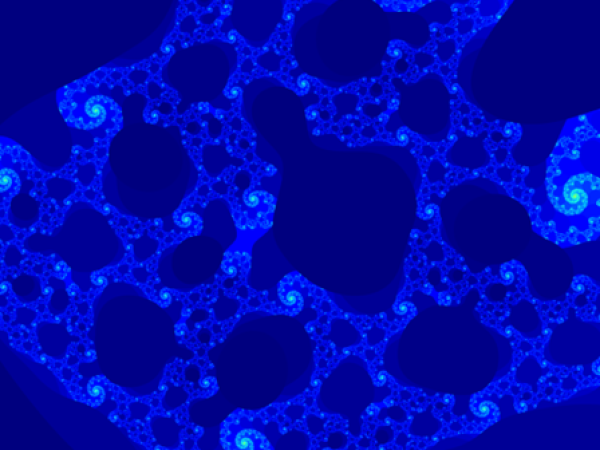
Blue fractal image, created by Wiktor Mazin.
We also prompted generative AI to create the opening scenario with the open sea with a set of clouds based on a fractal piece provided as input. Indeed, when looking at the shape of the waves you can see a fractal pattern.
The film wants to create an aesthetic seduction! Enjoy the beautiful scenery, shapes, and colors flowing with the music. This film can also help to remind us how important it is to create moments that move us and create space for reflection and focus on what is essential - the love of life, community, presence, and humanity.
Authors (alphabetical): Christina Dahl, Thorsten Mühge, and Wiktor Mazin.
Disclaimer: This article reflects our point of view.
- 1
Quantum computing 40 years later, John Preskill, https://arxiv.org/pdf/2106.10522
- 2
https://medium.com/qiskit/creating-fractal-art-with-qiskit-df69427026a0
- 3
https://www.linkedin.com/pulse/create-new-fractal-art-animations-wiktor-mazin-phd-mmt/
- 4
https://www.linkedin.com/pulse/space-fractal-art-qiskit-wiktor-mazin-phd-mmt/
- 5
- 6
Aesthetic seduction is a concept that Humberto Maturana outlined in his paper the “Biology of Cognition” published in 1970.
https://www.semanticscholar.org/paper/Biology-of-Cognition-Maturana/00d769e34afad088619aa04e1d7911b2467009fd
Wiktor Mazin
Wiktor Mazin and Thorsten Mühge are enthusiastic about art, music, technology and in particular Quantum Computing. Both are certified Qiskit developers and Qiskit advocates. Wiktor is passionate about creating fractal art with quantum computing where Thorsten is dedicated to music and improvisation. They have started multiple experiments combining sound and computing to create beautiful fractals. Christina Dahl is one of Denmark's most original and respected saxophone players. She is considered among the most exciting and most personal saxophonists with her very own style and expression. She was nominated in 2023 at The German Jazz Prize, 2023 in the category “Instrumental Album of the Year, International” with her Trio and album: "Souls of the Wind".
Article topics
Article translations are machine translated and proofread.
Artikel von Wiktor Mazin
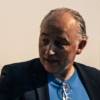 Wiktor Mazin
Wiktor Mazin 